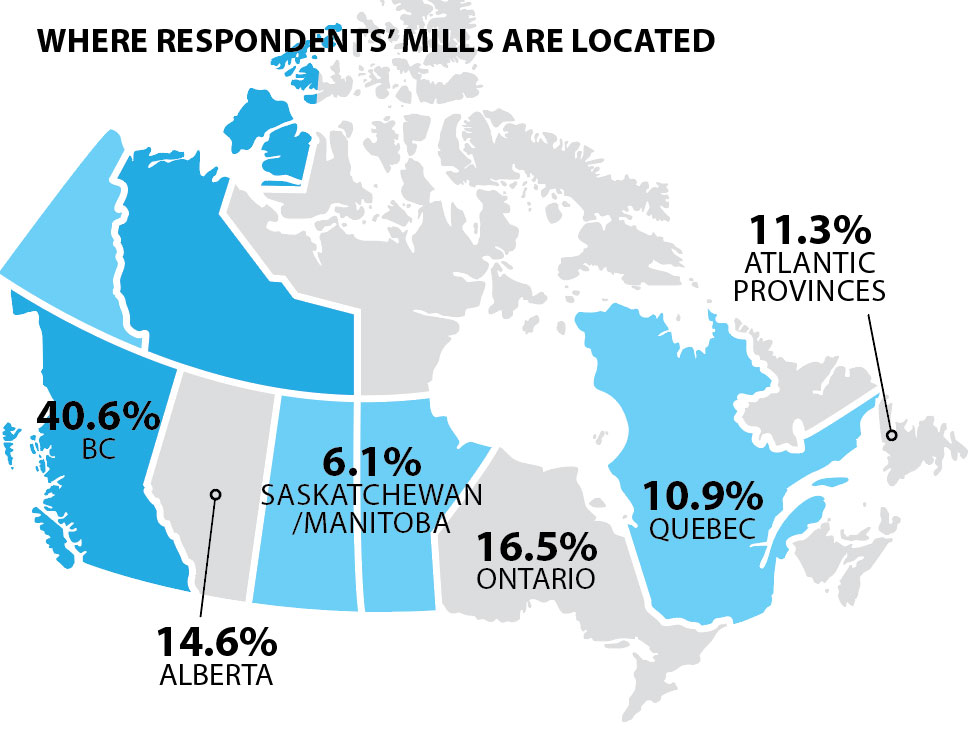
Features
Workforce
Paper
Pulp
An industry transformed: the pulp and paper workforce reacts to ongoing changes
Our human resources survey establishes the position of Canadian pulp and paper mills on workforce recruitment and retention.
October 19, 2021 By Sukanya Ray Ghosh

Two years ago, Pulp & Paper Canada conducted its first-ever survey on retention, reskilling and recruitment for the Canadian pulp and paper industry. The world has gone through a tremendous upheaval since then, with the global COVID-19 pandemic. It was time to take a look at what has changed during this period in the human resources segment of the pulp and paper industry.
We asked mill management to weigh in on hiring, training and investments, and non-management about their preferred methods of training and the challenges they face. COVID-19 was a significant part of the conversation this year.
Mills of all sizes, producing everything from kraft pulp to BCMTP, tissue to containerboard, from all over the country participated in the survey.
Hunt for new talent
For mill management, a major barrier to the growth of their companies today is the retiring workforce and the consequent loss of knowledge. 56 percent of the respondents said that they were highly concerned about this, while 30 percent felt at least somewhat concerned.
“In the mill that I worked in, there has been technical knowledge drain. Between 2019 and 2021, there were many voluntary resignations and early retirements,” said a respondent.
As the senior workforce retires, mills need to fill the gaps with new hires. However, this finding of new workers comes with its own set of challenges. One of the biggest challenges is location of the mill and the need for workers to relocate, according to 53 percent of the respondents. Fifty percent of the respondents also felt that other industries offering more attractive compensation packages made it difficult to attract new talent. Thirty-three percent of respondents said that applicants often do not have enough practical experience. General perceptions about the industry also act as a barrier to finding new people, according to another 33 percent of mill management respondents.
What you said
“At present, employees attach great importance to work safety. In addition, the arrangement and development of work in the epidemic situation requires frequent internal communication and counseling to facilitate the stability of employees’ working state.”
What are mills looking for in their potential employees? “Human” skills, such as critical thinking and communication skills, are very important, according to 60 percent of the respondents. Another 61 percent of the respondents said that problem solving skills of the candidates are highly important as well. The management also looks for information technology skills during the process. Thirty percent of the respondents said that this is very important, while 53 percent said that it is at least somewhat important.
The other side
For workers seeking jobs in the industry, online job boards, such as Indeed and Workopolis, are the most popular means of finding new opportunities. Seventy-two percent of the respondents said that they use these platforms. LinkedIn ranks second in popularity, with 55 percent of the respondents searching through this professional networking platform. Thirty percent of the respondents said that they go to social media sites, while 13 percent prefer local newspapers. Twenty-two percent of respondents said that they reach out to professional associations and 19 percent of the respondents work with recruiters. Word of mouth is another popular source, according to 34 percent of respondents.
Once in the job, employees need regular training opportunities to grow within the organization.
“To infuse young talent in the system, groom them and give them the opportunity to grow in the organization. This normally does not happen in the Canadian pulp and paper industry,” said one respondent.
Training can be imparted in many ways. Not every method is suitable for or liked by everyone. Sixty-one percent of respondents said that they preferred coaching and shadowing on the job. Forty-eight percent of the respondents prefer peer-to-peer training, while 31 percent of respondents find attending courses with third-party training companies the most helpful method. Forty-eight percent of the respondents said that they prefer continuous learning. Online modules are favoured by 30 percent of the respondents.
Here’s what else respondents shared with us.
Print this page


